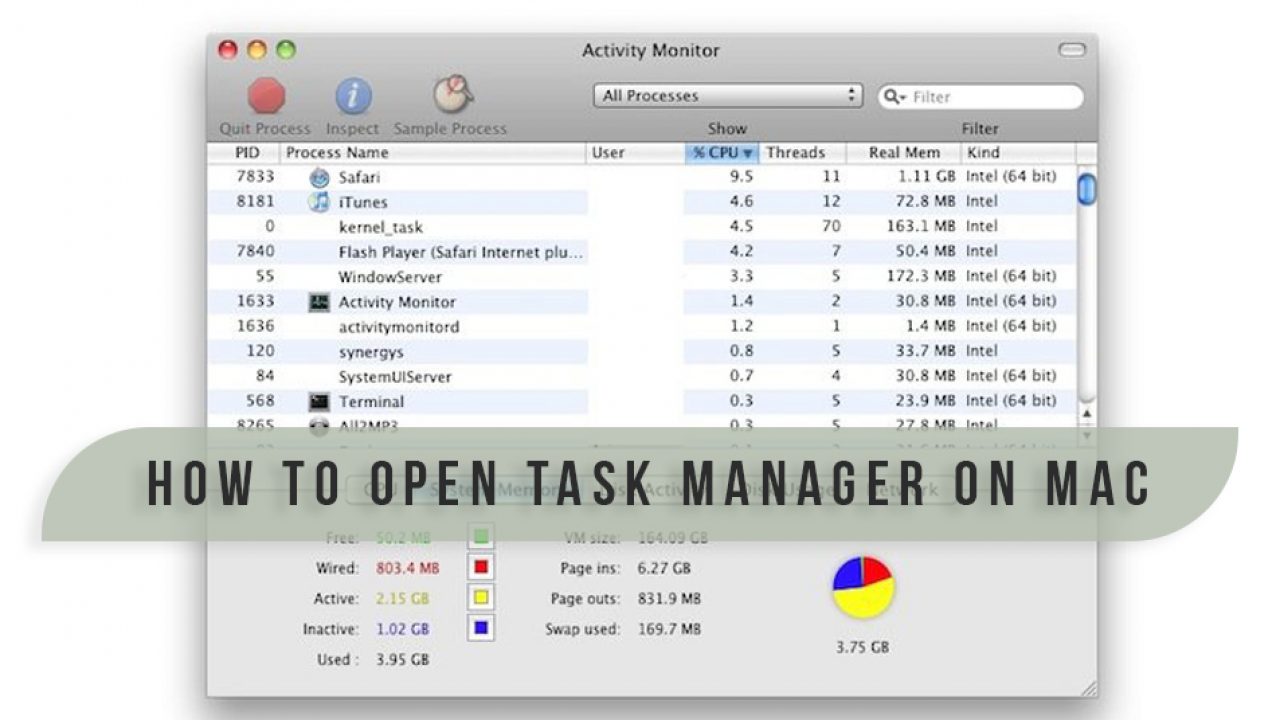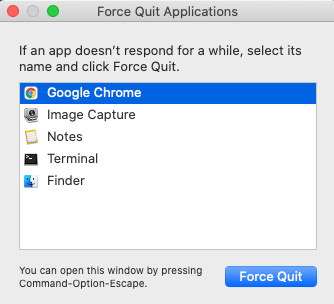

- Mac equivalent for task manager how to#
- Mac equivalent for task manager for mac#
- Mac equivalent for task manager mac os x#
- Mac equivalent for task manager mac os#
- Mac equivalent for task manager plus#
Memset(&result, 0, sizeof(struct kinfo_proc)) so the only way to detect failure is to set all fields to 0 upfront sysctl() refuses to fill the buffer if the PID does not exist, (10.6+, less limited process listing but still not including daemon processes)Ĭarbon : - (NSArray*)getCarbonProcessList (10.2+, deprecated in 10.7, very limited process listing) If you’re more concerned with stopping unresponsive applications, then don’t care about energy consumption and open Force Quit Application Manager for immediate quitting of unresponsive or held applications.Here are some specific implementations and details, note that proc->kp_proc.p_comm has a character length limit that's why I'm implemented infoForPID: instead It is a bit energy consuming but can help.
Mac equivalent for task manager plus#
Advanced user mode IBM Personal System/2 and Mac Plus Versions Soon See us at. Making use of it, you can quit applications that are troubling you. Because it is the only product on the market that performs that task.
To open Force quit application manager, you need to hold down Command+Option+Escape keys.  This is specifically for the users who are trying to end unresponsive applications running in the background. Mac users can use the same command to open the Force quit Application manager.
This is specifically for the users who are trying to end unresponsive applications running in the background. Mac users can use the same command to open the Force quit Application manager. Mac equivalent for task manager for mac#
Don’t worry, it is the same for Mac as well. They use ‘Control+Alt+Delete’ key to open Force quit application manager. There are some shortcut keys that windows users use for performing some specific tasks.
If it’s still running, use force quit option, Activity Monitor will do the rest. Mac equivalent for task manager mac os#
Click quit, it’ll stop the running applications that are causing any sort of disturbance in your Mac OS X. A pop-up window comes up asking if you want to quit your mentioned application. Mac equivalent for task manager how to#
See How to Use the Force Quit to Terminate a Wayward Mac Application for.
There is an ‘X’ button on the upper left side of the Activity Monitor. Another way to help you force close a program without Task Manager is to use. You need to open Activity Monitor and click application which shows some errors and not stopping anymore. You can follow the below mentioned steps to perform force quit. It happens sometimes when your Mac Freezes or shows up some other error. How to Force Quit Applications in the Task Manager (Activity Monitor)?Īre you facing problems stopping your applications in Mac? No worries. It is easy to find out how much data is being sent or received by a single application. The disk pane deals with the data that each application or process has read from the internal memory of your Mac and it also mentions the data that has written to the disks. It shows the overall energy of the system as well as the energy used by a single Application. Energy Pane shows the energy of the system that is being used in your Mac. You can turn them off if you feel if it’s too much for your Mac. It tells us about the memory that is being used by the running applications. Memory bar’s concept is easy to understand. CPU bar tells us how applications are working and affecting the activity of our Mac OS X. You can check there whether these are harming you Mac or not. CPU (Central Processing Unit), Memory, Disks, System Energy and Network. Mac equivalent for task manager mac os x#
It’ll be showing menu, choose options and click Dock option to access it easily whenever you want in just one click.Īctivity Monitor in Mac OS X can perform multiple tasks and shows the overall performance of the system.

Just Right click on the Activity Monitor. Here’s another way of accessing the Activity Monitor when you find it once. Manage your desired tasks and see what’s going on there in your Mac OS X. Press ‘Return Key’ when it comes in the search results. Type Activity Monitor there in the search field and Mac will start showing it up. Open search bar or Press Keyboard Shortcut Keys Command+Spacebar. You don’t need to follow this path to access Task Manager in Mac OS X. Keep holding them simultaneously for at least 3 seconds to launch the Activity Monitor app on the screen. All you got to do is press Command + Option + Shift + Esc keys at the same time. First of all, It can be found in /applications/utilities/folder. Some macOS versions also have a keyboard shortcut to open task manager in Mac. I am going to provide you the easiest ways to open the application. It is very easy to find Activity Monitor in your Mac. How can you Open the Task Manager in Mac? It is approximately 90% equivalent to Task Manager which is being used in Windows Operating System. It deals with the performance of each and every part or application in the system in one place. Most of the users having Windows Operating Systems, don’t feel uncomfortable while using Activity Monitor in Mac OS X and they call it as Task Manager. Mac’s Task Manager is called Activity Monitor. How to Force Quit Applications in the Task Manager (Activity Monitor)?Īctivity Monitor is the Task Manager for Mac. How can you Open the Task Manager in Mac?. Activity Monitor is the Task Manager for Mac.







 0 kommentar(er)
0 kommentar(er)
